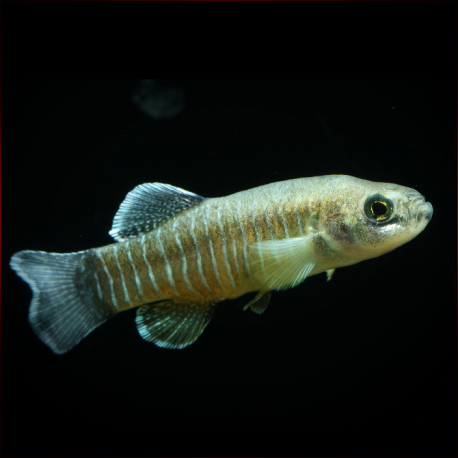More info
Datasheet
| Minimum Tank Size | 60 litres / 15.85 US gallons |
| Maximum Size | 3.5cm / 1.38inches |
| Temperature | 8°C / 46.40°F - 32°C / 89.60°F |
| Hardness | 10.03dgH / 179ppm - 30.03dgH / 536ppm |
| pH | 7.0-8.5 |
General Description
The Aphanius Arakensis, commonly known as the Arak Tooth Carp, belongs to the family Cyprinodontidae and falls under the classification order Cyprinodontiformes. This species, with a maximum size of 3.5cm, can be distinguished by specific anatomical features such as anal-fin rays, lateral line scales, caudal peduncle scales, and gill rakers. Its genetic makeup shows close relation to A. farsicus and A. sophiae. This fish species is not widely available in aquatic stores due to its conservation status, precarious due to human activities.
Aquarium Setup
For the Aphanius Arakensis, a minimum tank size of 60 liters is recommended. Setting up the aquarium involves providing broken lines of sight and suitable mediums for egg deposition during the spawning season. The addition of marine salt to the water and exposure to natural sunlight are crucial. Filtration should not be too strong, and the tank can be maintained outdoors to enhance the fish's color and condition. The water parameters should be within a pH range of 7.0-8.5, hardness of 179-536ppm, and a temperature range of 8-32°C.
Behaviour
Due to its specific water requirements and aggressive spawning behavior, A. arakensis is not suitable for a community aquarium. To encourage captive reproduction and maintenance, it is advisable to keep this species alone or in specific gender ratios. Males of the species form temporary territories and show intensified coloration during reproductive efforts, while females deposit eggs continuously between April and November, with peaks in April and August.
Feeding and Diet
Aphanius Arakensis are micropredators known to feed on small aquatic crustaceans, insect larvae, worms, zooplankton, and occasionally plant material. In aquarium settings, they can be fed dried foods along with live or frozen options like Artemia, Daphnia, or bloodworms. During periods of high reproductive activity, a varied diet is essential to support their nutritional needs.
Reproduction & Dimorphism
This species exhibits a fractional spawning behavior, with females laying eggs on surfaces continuously during specific months. Eggs are attached to algae or other materials and must be carefully monitored to prevent predation. Males defend territories and display intense coloration to attract females. Sexual dimorphism is evident, with males displaying silvery bars and white-edged fins, while females are larger with dark flank markings.
Habitat and Distribution
Endemic to the Namak Lake basin in Iran, A. arakensis inhabits shallow, stagnant ponds formed by natural springs with muddy substrates. The habitat lacks aquatic plants but is surrounded by some vegetation. The species coexists with other endemic fish species like Barbus miliaris and Paracobitis iranica in a habitat affected by anthropogenic pollution. The Namak Lake basin's unique environmental conditions influence the adaptation and survival of this species.

